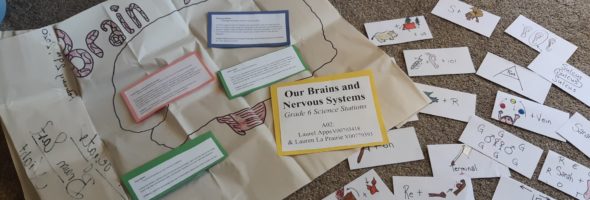Human Body
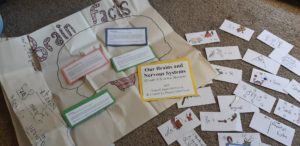
Nervous System- Grade 6
5 stations
Passport, fill out part for each activity
Activities:
- Think Piece & Breathing Exercises: Intergenerational trauma** impact on the brain and breathing exercises
- Fact Brain: big brain with students’ facts or drawings in it. Collaborative brain to further understanding of the brain and nervous system
- Newspaper Article: Creative writing prompt- news article about the brain (innovations, findings about brain OR heroic deed done by a brain)
- Playdoh Model: Playdough and string model of nervous system w/ toothpicks and placards to identify parts
- Brain Game: Nervous system hieroglyphics (20) placed around room, students must identify 10 to complete.
Human Nervous System
Introduction- what the centre is about and for what grade levels it is best suited
Introducing the nervous system to grade 6 students and showing how many different ways one can learn about the nervous system’s impact on humans.
Rationale for the Centre – why this centre is appropriate for students, how the centre integrates with other subjects, how the centre promotes science, and how you would ideally use this centre in your classroom.
The human nervous system is part of the grade 6 BC Curriculum. Understanding the nervous system helps complete students’ understanding of their bodies and how they work. The centres can be integrated with English Language Arts (creative writing),Social Studies (Canadian history), Art (Brain Facts can be represented in any creative manner). This centre promotes science as all activities are centred around the human nervous system and how it functions. Each activity would be set up in a contained space in the classroom (eg. 1 activity per table).
Safety or other concerns – for instance you might find the centre is quite messy or requires a lot of preparation to “restock” the supplies in it.
The biggest safety concern is the station on intergenerational trauma and residential school survivors due to the station’s high emotional risk. In this case, make sure you have a strong classroom community prior to running this station, and it is vital to have completed a lesson on residential school prior as a whole group. For this reason, we added breathing exercises that students can integrate into their learning as they attempt this station as a self-check on their own emotional climate. When needed, teacher must become involved in this process of learning, and you must also provide an option to complete this component separate from class for students who need more processing time or a separate space.
Our logistical concerns revolve largely around the large amount of space taken up in the classroom, so you will need to ensure students have adequate room to not be overwhelmed by the volume of requests. Further, since it will largely be completed individually, you need to ensure there is enough space and not too many sound distractions caused by centre-participants to other learners in your classroom working on other tasks. For this reason the hieroglyphics in particular can be set up in class or in the hallways, and be sure to remind students to use appropriate noise levels and to move considerately while searching for different words.
Supplies required – list what is needed to recreate your centre.
- Computer/ Chromebook (if students find typing easier than writing)
- Passport
- Brain print-out for playdough station model
- Flipchart paper
- Markers
- Playdough
- String/ pipe cleaners
- Newspaper article for creative writing piece
- Paper
- Toothpicks & placards
- Hieroglyphics for scavenger hunt
- Speaking Our Truth book by Monique Gray Smith
- Brain Trauma article- https://www.edutopia.org/blog/brains-in-pain-cannot-learn-lori-desautels
What are the activities in the centre – these activities can be taken directly from the centre and placed here.
Think Piece & Breathing Exercises: Intergenerational trauma** impact on the brain and breathing exercises
Read these two passages, one on trauma and the brain and one on the effects of residential schools on multi generations. Discuss how these two texts are connected and the ways that past events affect brain function.
Trauma and the Brain (from “Brains in pain cannot learn!”)
https://www.edutopia.org/blog/brains-in-pain-cannot-learn-lori-desautels
What is trauma? When we hear this word, we tend to think of severe neglect or abusive experiences and relationships. This is not necessarily true. A traumatized brain can also be a tired, hungry, worried, rejected, or detached brain expressing feelings of isolation, worry, angst, and fear. In youth, anger is often the bodyguard for deep feelings of fear. Trauma-filled experiences can be sudden or subtle, but the neurobiological changes from negative experiences cause our emotional brain to create a sensitized fear response. When we feel distress, our brains and bodies prioritize survival, and we pay attention to the flood of emotional messages triggering the question, “Am I safe?” We react physiologically with an irritated limbic system that increases blood pressure, heart rate, and respiration with an excessive secretion of the neuro hormones cortisol and adrenaline pumping through our bodies. Chronic activation of the fear response can damage other parts of the brain responsible for cognition and learning.
We are all neurobiologically wired for social connection and attachment to others. When children don’t receive healthy connections in early development, the brain rewires and adapts just as readily to unhealthy environments. If brain development is disrupted by adversity at any age, but especially in early development, the skills of problem solving, reflection, and emotional regulation are compromised and diminished. Children and adolescents need stimulation and nurturance for healthy development and attachment. Students whose development is disrupted often walk through the doors of our schools mistrusting adults.
Ripple Effect (pg 70-72) in Speaking Our Truth by Monique Gray Smith
Breathing Exercises: 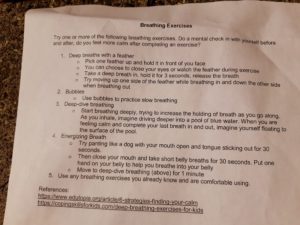
Fact Brain: big brain with students’ facts or drawings in it. Collaborative brain to further understanding of the brain and nervous system
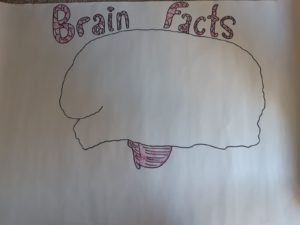
Newspaper Article: Creative writing prompt- news article about the brain (innovations, findings about brain OR heroic deed done by a brain)
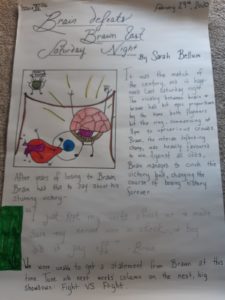
Playdoh Model: Playdough and string model of nervous system w/ toothpicks and placards to identify parts
Credit: https://www.science-sparks.com/make-a-play-dough-brain/
- Students will create their own brain with playdough
- Label parts of the brain with placards provided
- Picture or model will be provided, students can do own research to design model that extends beyond example
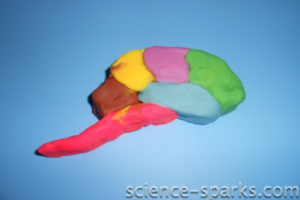
Brain Game: Nervous system hieroglyphics (20) placed around room, students must identify 10 to complete.
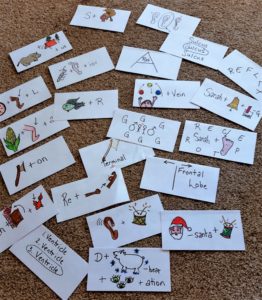
Specifics on how to design your centre – a brief description so that someone, including you, might be able to recreate your centre.
Bibliography or the source of your activities – please credit your sources.
Breathing Exercises. Taken From: https://www.edutopia.org/article/6-strategies-finding-your-calm
https://copingskillsforkids.com/deep-breathing-exercises-for-kids
Brains in Pain Cannot Learn. Taken from: https://www.edutopia.org/blog/brains-in-pain-cannot-learn-lori-desautels
Speaking Our Truths by Monique Gray Smith. Taken from:
https://library.biblioboard.com/viewer/1e61fe0a-6319-455d-afd8-8bf531fed254/71https://Make a playdough brain. Taken from: www.science-sparks.com/make-a-play-dough-brain/
Brain Hieroglyphics. Taken from: https://faculty.washington.edu/chudler/hiro.html?fbclid=IwAR3mtvjtW0SdirJnHoqA8m1MK0WYebu24TSUtwvY7p0x34zqMgBMd7nQXRk

